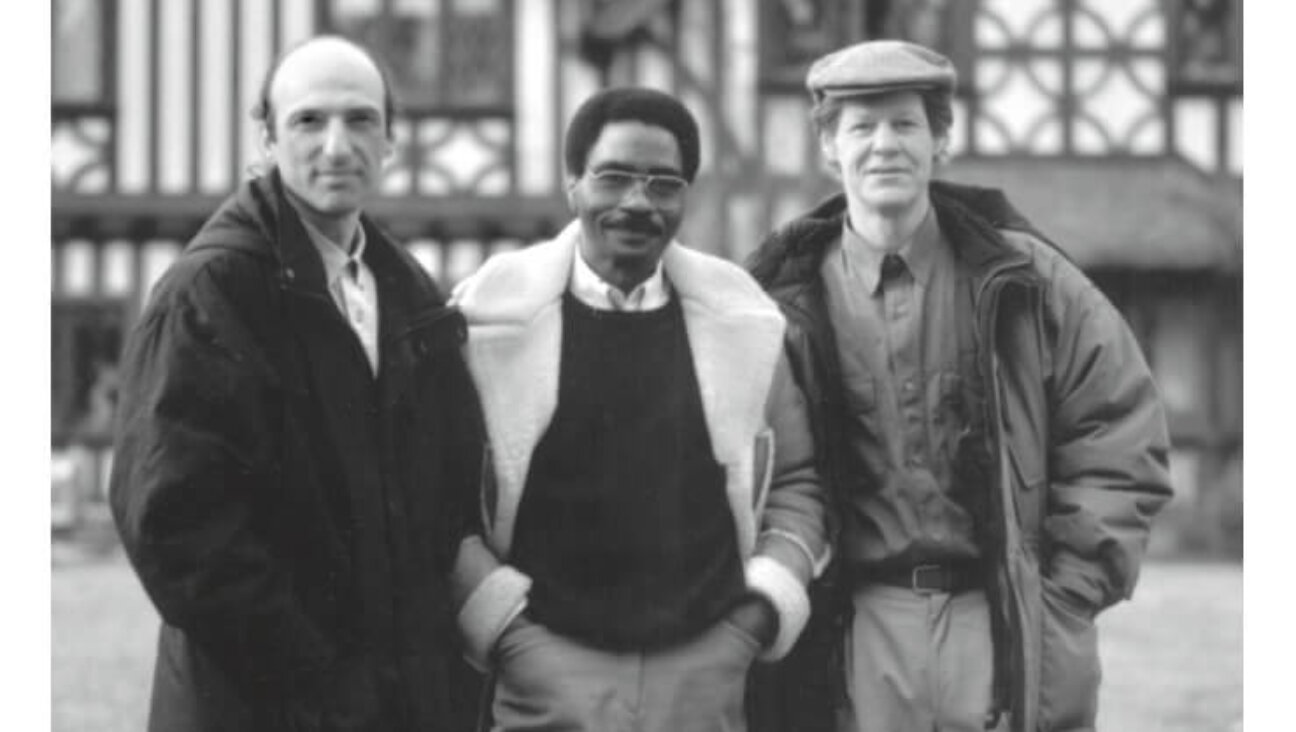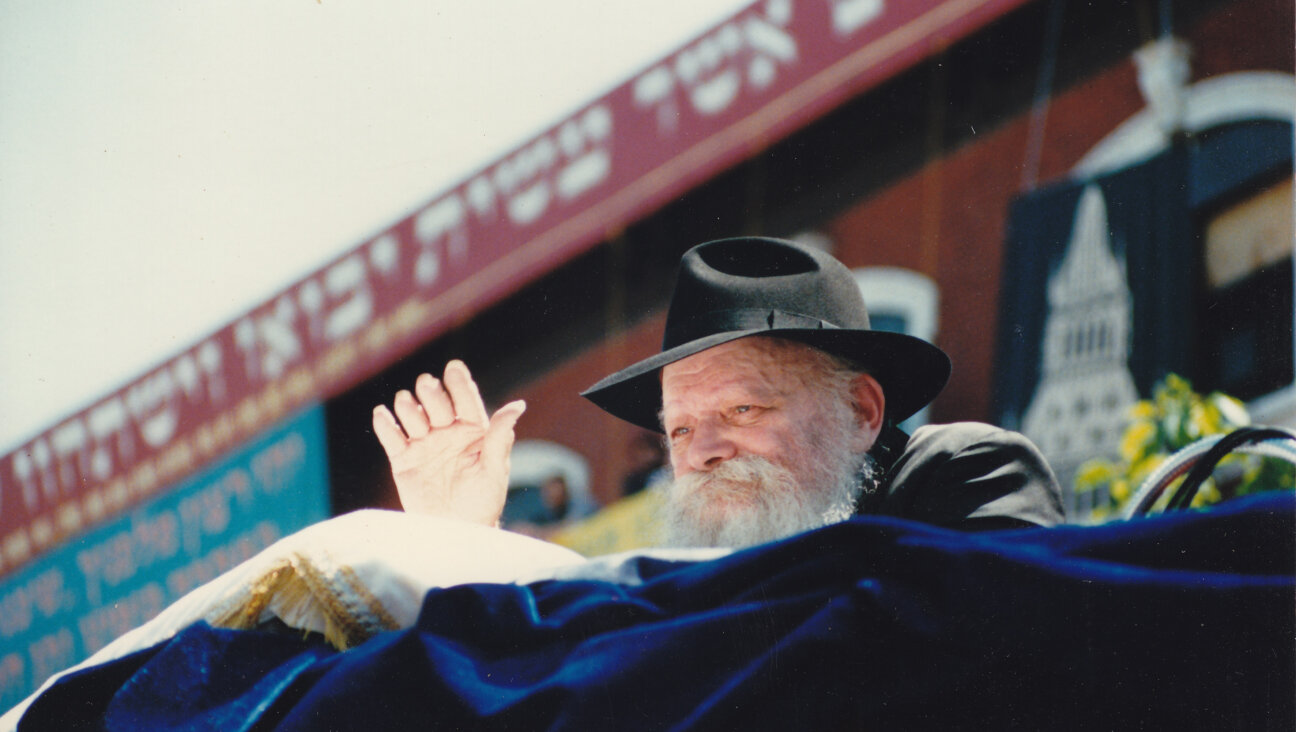Archivists and Art

Art in the Family: Charlene von Saher (left) and her mother, Marei von Saher. Image by KAREN LEON
ISRAELI AND PALESTINIAN ARCHIVISTS HONORED BY SCONE FOUNDATION
“Without the pain of primary research, we would remain hostage to ill-informed writers or authorities,” said Stanley Cohen, founder of the Scone Foundation, at the January 25 presentation of the foundation’s Archivist of the Year award, held at the CUNY Graduate Center at Fifth Avenue and 34th Street. The award was presented to Yehoshua Freundlich, director of the Israel State Archives, and Khader Salameh, director of the al-Aqsa Mosque Library and the Islamic Museum.

Art in the Family: Charlene von Saher (left) and her mother, Marei von Saher. Image by KAREN LEON
Cohen amplified: “This is a celebration of the archivist profession, [thanks to whom] we exchange doubt for certainty… and we thought that they should be honored more directly than a mention in the front or back of a book.”
The post-award conversation between Columbia University Professor of Arab Studies Rashid Khalidi and the director of the UCLA Center for Jewish Studies, David Myers, was at times a verbal ballet that tiptoed around Israeli-Palestinian archival history issues.
Lauding Israeli archives, Myers noted: “I don’t know the state of Palestinian archives, as well. But I have spent a fair bit of time in Israeli archives and thought that it is through such archives that we have developed a more refined understanding of the causes of the Palestinian refugee problem, which was the result, at least in part, of expulsions. It required a good deal of maturity and courage on the part of Israeli researchers and archivists to allow for a revision of a deeply held historical myth. The willingness to countenance unflattering historical data, at odds with one’s received narrative, is a necessary condition of history as an ameliorative force in deep-seated conflict.”
The evening’s participants included Merav Mack of the Van Leer Jerusalem Institute and Dov Waxman, Graduate Center deputy executive officer. Waxman stood in for provost Chase Robinson as conversation moderator. Among the noted guests were two-time Pulitzer Prize winner Robert Caro, New York Times and International Herald Tribune columnist Roger Cohen, writer David Kahn, French writer and historian Annie Cohen-Solal, journalist David Margolick and Harvard University Press consultant Dorothy Gitter Harman.
STOLEN JEWISH ART COLLECTION HIGHLIGHT OF UJA-FEDERATION OF N.Y. GALLERY RECEPTION
“We were robbed twice — first by the Nazis, then by the Dutch government,” declared Charlene von Saher, granddaughter of Jacques Goudstikker (1897–1940), a Jew and pre-eminent Dutch Old Masters dealer whose collection of some 1,400 works of art was partially looted by Hermann Goering. Von Saher and her mother, Marei von Saher, were special guests at the January 27 UJA-Federation of New York’s New York-Presbyterian Hospital Campaign cocktail reception, held at Arader Galleries on Madison Avenue and 72nd Street. Charlene von Saher informed: “In 1940, my grandfather Jacques and my father left on the SS Bodengraven [ahead of the Nazis]. With them they had a black notebook listing the inventory, which became the key for the stolen collection.” In great detail she described the family’s ongoing legal battle for part of the recovered artworks that the Dutch government has retained for its National Collection.
Charlene informed that more than “200 of my grandfather’s stolen artworks from Germany had been recovered by Allied forces after the Nazi surrender and transferred to the Dutch government with the expectation “that the art would be returned to its rightful owners.” She recounted how in 1997 it all began with a Dutch journalist “who began a search for survivors…. The Dutch press went crazy…. This [looted art] belonged to the family and its inheritors…. Rather than [seeing this] as an attempt to correct injustices against Jews, our lawyers were labeled as bounty hunters.” In 2006, Goudstikker’s daughter-in-law and heir, Marie von Saher, finally got a portion of the artwork restored to her by the Dutch government. Still, the legal battle with the Dutch government for the return of the balance of the artwork [in the National Collection] continues, as does the international research project to locate the thousands of stolen artworks still spread around the globe.
The event chairs, Drs. Lawrence and Eileen Cutler, noted some of UJA-Federation’s programs — also highlighted in a brief and comprehensive video presentation — that serve 4,600 Holocaust survivors in New York City, 25% of Israel’s poor, 188,000 in the former Soviet Union, 100,000 students in Jewish day schools and others. The hospital campaign chairs were Dr. David Blumenthal and Dr. David Shapiro. It was a convivial evening, a mini American Medical Association meeting in an art setting. And during the von Sahers’ presentation, not a single interruption by beeper or phone!
“WITHIN THE WHIRLWIND”: AN INTELLECTUAL’S NIGHTMARE IN STALIN’S GULAG PARADISE
The leitmotiv of Marleen Gorris’s indelible Polish/German/Belgian film, “Within the Whirlwind,” which on January 28 closed the New York Jewish Film Festival at Lincoln Center, is how amid unrelenting fear, terror and privation, the human spirit manages to survive — and thrive. The film is based on the memoir of Eugenia Ginzburg, a professor at Kazan State University in the Soviet Union in the 1930s, stunningly portrayed by Emily Watson. In class, Zenia (as friends call her) chastises a student for submitting a work without punctuation. “It opens up the text to multiple interpretations” is the student’s defense. Ginzburg then writes on the blackboard, “Pardon impossible to be executed.” She puts a comma after “pardon.” It then reads: “Pardon, impossible to be executed.” A student calls out, “He lives!” Placing the comma after “impossible,” it then reads, “Pardon impossible, to be executed.” Ginzburg asks the class, “Should the condemned man be executed on the strength of a comma?” The no-punctuation student replies,, “Could be either way, I suppose.” Ginzburg, a loyal Communist Party member who barely acknowledges the plots swirling about her, finds herself in this no man’s land of political “commas.” Watching a colleague dragged off by the authorities, she comments, “I’m sure they know what they are doing.”
Later, when she is called on the carpet for not having condemned a colleague who has been accused of being “party to Trotsky terrorist counter-revolutionary groups,” Ginzburg defends herself by claiming ignorance of the facts. “We do not arrest innocent men in this country!” her accuser proclaims. Forbidden to teach, Ginzburg is then arrested, tried and sentenced to execution, but is tearfully relieved when, in 1939, she is condemned to 10 years in Stalin’s gulag for “collaboration and conspiring with the enemies of the people.”
On the Trans-Siberian train with other prisoners, a young woman is convinced that “Comrade Stalin” is unaware of the injustices of his authorities, and that letters and petitions need to be sent to inform him about the women’s arrests. As the train stops in some godforsaken station at which the train guards buy produce from local peasants, Ginzburg is shown peering through a chained opening in a cattle car, watching a young peasant girl come across a frozen field, bearing a basket of raspberries. In what may be a nod to the little girl in the red coat in Steven Spielberg’s “Schindler’s List,” the raspberries in this black-and-white film are tinted red! In one of the film’s many sublime moments, the young girl hands the basket to Ginzburg, then reaches through the opening and strokes the prisoner’s cheek.
Life in the gulag is beyond brutal. The worst enemy is the 40 to 50 below zero weather in which the women work, felling trees. Survival depends on the kindness of fellow prisoners, and, as in Nazi concentration camp settings, it was those friendships that often prevented death or suicide. Ginzburg’s sanity is sustained by poetry, Pushkin’s writings and the camp’s “Volga German” doctor Anon — himself a prisoner, played by Ulrich Tukur (last seen in the film “North Face”) — who is distrusted by the other Russian prisoners. Cultured and sensitive, he cares for the prisoners, often defying orders. Following Stalin’s death, Ginzburg was “rehabilitated in 1955.” She was forbidden to return to “the mainland,” Russia proper.
Ginzburg’s “comma” example — by which a man lives or dies — reminded me of the following Jewish wartime joke: Comrade Stalin is standing on the parapet above Lenin’s mausoleum, waving to the crowd in Red Square. A little Jewish man pushes through and runs toward Stalin, waving a letter: “Comrade Stalin! Comrade Stalin! I have a message for you from Leon Trotsky!” Stalin asks that the letter be brought to him, and he reads it aloud: “You are right. I am wrong. I should apologize! Signed Leon Trotsky.” The Jewish man is beside himself. “No! No! Comrade Stalin. That is not the correct way to read this. Please let me read it to you the way Trotsky intended.” Stalin hands the letter to a soldier, who gives it to the little man, who reads it with the intended inflections: “
You are right?! I am wrong?! I should apologize?!”
Between the time that I witnessed my father’s predawn arrest in Vilna on August 29, 1940, by the NKVD, — Stalin’s secret police and precursor of the KGB — and our 1959 face-to-face reunion in New York (we did correspond during the intervening years following his release from his Soviet imprisonment, years later in Germany and Argentina), he never spoke of his Siberian gulag experience. What little I eventually found out was thanks to Menachem Begin’s autobiography, “White Nights: The Story of a Prisoner in Russia” (originally published in 1977 by Steimatzky’s Agency Ltd., in Tel Aviv), in which Israel’s then prime minister describes how he and my father — who did not share Begin’s politics — shared a prison cell in Vilna’s Lukishki prison, where the two organized a hunger strike.
In 1978, when Begin came to the United States for the Camp David Accord, in a telephone conversation from Washington, D.C. — in Yiddish! — he told me of my father’s and his prison experience, their ongoing friendship and meeting in 1955 in Buenos Aires, Argentina, of which I knew nothing. My father’s wrenching gulag experience — which “Within the Whirlwind” makes palpable — was revealed at his funeral a which I learned that he had maintained his sanity during months of torture and solitary confinement—not with poetry and Pushkin as did Ginzburg—but by writing down the names of tens of thousands of people he had met in the course of his life as a journalist.
A message from our CEO & publisher Rachel Fishman Feddersen

I hope you appreciated this article. Before you go, I’d like to ask you to please support the Forward’s award-winning, nonprofit journalism during this critical time.
We’ve set a goal to raise $260,000 by December 31. That’s an ambitious goal, but one that will give us the resources we need to invest in the high quality news, opinion, analysis and cultural coverage that isn’t available anywhere else.
If you feel inspired to make an impact, now is the time to give something back. Join us as a member at your most generous level.
— Rachel Fishman Feddersen, Publisher and CEO






















